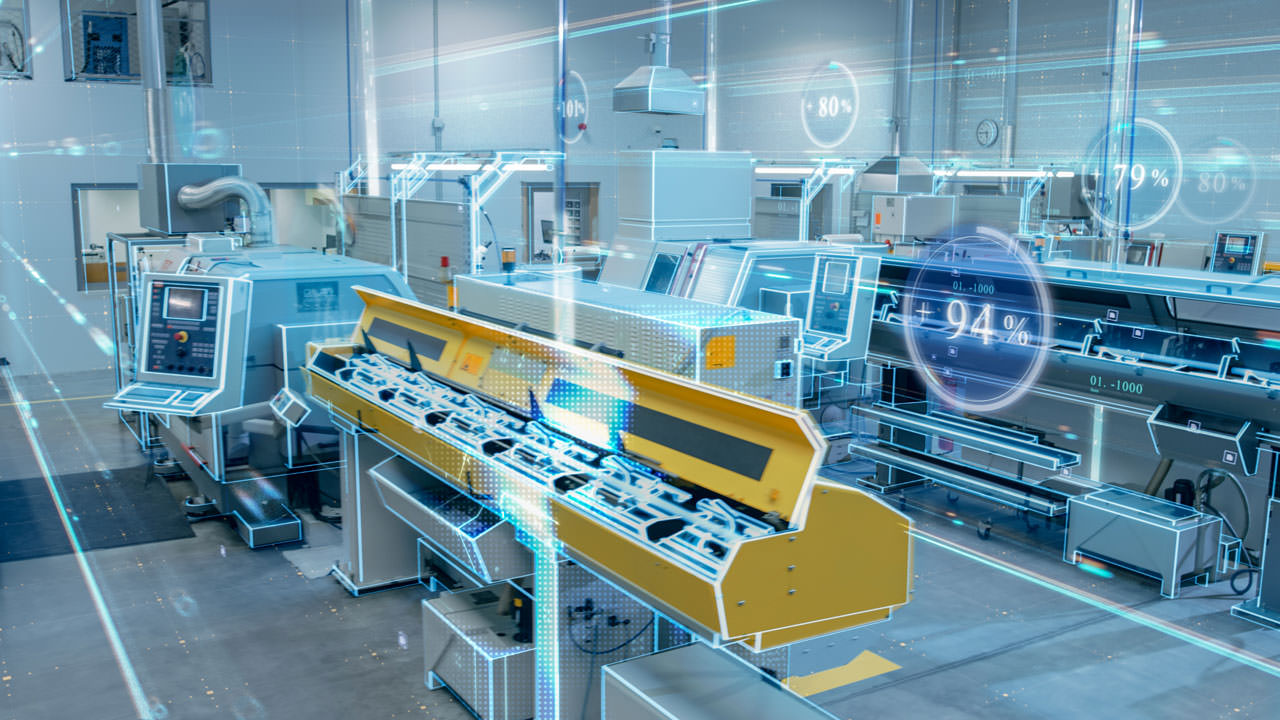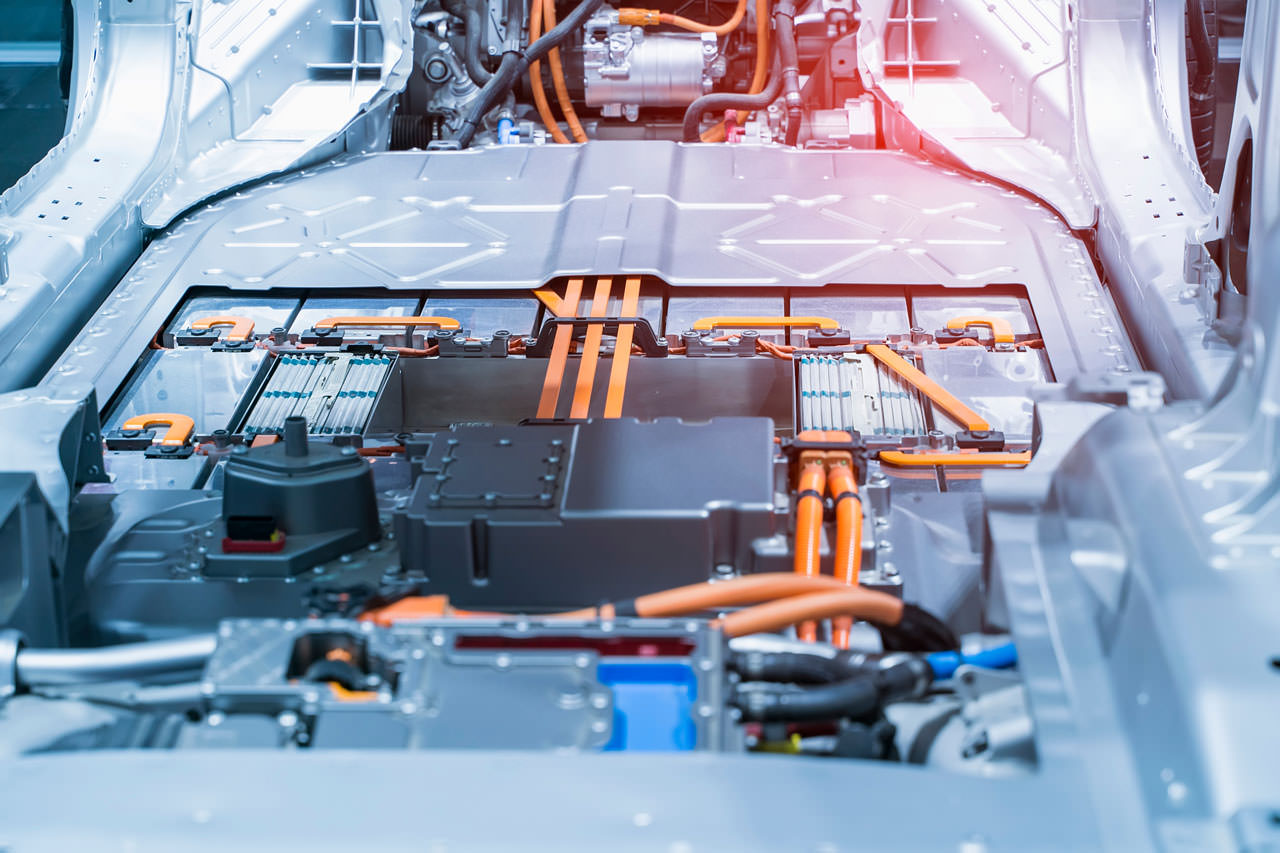TechnologyMarch 14, 2023
Industry 4.0 challenges and the promise of convergence

The Industry 4.0 paradigm is continuing to reshape every industrial sector. The data-driven, automated technologies that this framework leverages are having a vast and lasting impact on every single aspect of manufacturing, from R&D to operations and the entire supply chain.
By using the Industrial Internet of Things (IIoT), technology is increasing the digitalisation and interconnectivity within companies as well as with their suppliers and customers in their broader value chains. In this way, it is possible to develop smart, connected industries that benefit from fully optimised processes.
At the core of any digital journey is the ability of companies to navigate massive and ever-increasing volumes of data to gain unique, actionable insights that support real-time decision making. However, currently a key challenge for manufacturers is implementing effective data gathering and integration solutions to support visibility, analytics and therefore optimisation. A further challenge is to ensure disparate OT systems can also communicate for the most effective process operation.
While traditional industrial Ethernet offers proven value in supporting data-driven, automated factories, its limited ability to support the smart manufacturing operations of the future is now coming into focus. In effect, the higher levels of performance, connectivity and cybersecurity required by Industry 4.0 applications can rarely be met in full by current network technologies.
Delivering convergence across the enterprise
Typically, companies have been relying on multiple networks in their operations. The shop floor, or OT level, typically features production lines or processes where multiple networks are employed. These may handle real-time process signals such as I/O, motion and safety systems. Along with these may be non-real-time traffic, such as video frames from inspection systems, barcodes, printed information, quality and maintenance data and so on. These have often required separate networks, leading to complex architectures that could be costly and time consuming to install, operate and maintain. As a result, there is often a limited ability to provide the level of transparency required to control processes in an optimum way. When it comes to sharing this data with higher level IT systems to make it available across the enterprise, managing the multiple streams and combining them has also been difficult.

TSN allows devices and systems to all talk on the same OT network architecture along with upper-level IT systems.
Allowing all the devices and systems involved to all talk on the same OT network architecture and to the upper-level IT systems, where required, can be addressed by employing a converged approach. As we have seen, convergence allows everything to share the same network architecture to communicate and hence avoids the complexity and cost of multiple networks.
By doing this, companies can apply the intelligence of IT to OT systems, creating an in-depth understanding of machines, processes and plant to optimise processes, drive up efficiencies and maximise productivity.
Given how the networks for these different domains were created, their convergence is often not straightforward, bringing forward key challenges and concerns that need to be overcome. More precisely, OT networks are made to deliver real-time, deterministic performance. If large volumes of non-real-time data are transmitted via the same infrastructure, this may impact the real-time data transfer performance due to traffic conflicts, lack of bandwidth and prioritisation. This may lead to sub optimal process operations that suffer from communications bottlenecks, decreased productivity and downtime.
Such a scenario is also optimistic, as it pre-supposes that the ability to combine non-real-time and real-time process data on the same network actually exists. While many industrial Ethernet protocols offer the ability to combine multiple types of process data, such as I/O, motion and safety, the ability to combine these with other data, as described above, is often missing.
Finally, many plants have evolved over time and hence have “islands” of different, non-interoperable industrial Ethernet systems. This further limits the ability to share data across the plant.
In summary, before companies can progress on their Industry 4.0 digitalisation journey to full process optimisation, they need a network infrastructure that addresses the following challenges:
- Convergence of multiple types of real-time process related traffic, such as I/O, motion and safety.
- Convergence of real-time process traffic with non-real-time traffic, such as vision system images, barcode readers, printers, quality and maintenance data and so on.
- Convergence of different non-interoperable industrial Ethernet protocols.
- Convergence of OT and IT systems.
- Ensuring all this traffic is secure and protected from unauthorised access.
While conventional industrial Ethernet is not suited to address all these issues, an innovative, complementary technology can provide the right solution – TSN.

TSN technology is already being implemented in various automotive applications worldwide.
Automotive
Use of TSN for automotive assembly, along with gigabit Ethernet bandwidth, offers key advantages in the drive toward higher performance assembly operations. Automotive manufacturing facilities are known throughout industry as leaders in Industrial Ethernet automation and machine control solutions and the need for the highest levels of IT/OT integration. The complexity of these operations, and a constant push to speed up production processes, requires excellence in networked communication, enterprise connectivity and deterministic control.
While automotive manufacturing systems handle volumes of data generated in real-time during assembly operations, TSN offers a single network with TSN-enabled components that offer resources for time-critical data transmission, while allowing less critical traffic to co-exist on the network.
Total cost of ownership can be reduced, since multiple types of networks are combined into one unified control and communication hierarchy. And importantly, the result for manufacturing operations is not only higher performance, lower costs and simplified maintenance, but also better-quality vehicles.
TSN also helps to build automotive production lines that ensure shorter cycle times, as the technology combines advanced control and synchronization with tools for prioritizing traffic. The network allows timely delivery of time-critical traffic, while allowing less critical traffic to co-exist on the network.

The food and beverage sector requires high production speeds and maximum uptime.
Food & beverage
The food and beverage sector requires high production speed and volume to be profitable. Smart manufacturing is becoming a key topic to help meet these goals – and data is the enabler for this trend. Processes can only be run at the highest productivity when there is the necessary visibility of how close they are to maximum efficiency and what needs to be done to close this gap.
TSN addresses challenges in food and beverage applications by providing the potential for a high degree of process transparency despite the use of many different systems across a plant by implementing a converged, gigabit communications architecture.
It offers the opportunity for all systems from batching, mixing, forming, through to packaging to share information, thus providing the ability to see the big picture necessary to run a plant or line at maximum efficiency. Possible data islands caused by dissimilar systems may also be addressed by combining the traffic from different equipment onto the same network. This can ultimately all be combined into a common stream of data that is more easily shared with higher level supervisory systems and consequently allowing actionable insights to be derived to feed back into the processes for complete optimisation. AI is increasingly becoming a topic for the industry, and supplying these systems with the large volumes of process data required to derive the necessary process insights and corrective actions will become easier when supplied by TSN communication architectures.
TSN also provides the foundation of more secure processes by making it simpler to monitor process data when converged onto a single architecture. Hence unauthorised actions can be detected more quickly and processes safeguarded in real-time.
Lithium battery
The lithium battery industry has seen exponential growth over the past several years as the automotive industry, in response to environmental pressures, has been racing to implement electric powertrains. This trend is set to continue. Hence the ability of the industry to respond to this continually rising demand is critical to its success. Being able to add manufacturing capacity while maintaining cell quality are key challenges.
TSN is especially suited to addressing these challenges. The ability to offer a converged network architecture with gigabit bandwidth means that it’s possible to have high performance motion traffic for possibly hundreds of axes run over the same network as other types of machine control, while also integrating vision, safety and other systems. These may all coexist on the same network without compromising performance or quality.
Water treatment
The water industry is turning to digitalisation to assure its success and initiatives like “Water 4.0” are examples of this. Processes such as chemical dosing need to be further optimised. Vast supply networks benefit from intelligent data acquisition which in turn raises the issue of handling the huge amounts of data they generate. Cybersecurity is a key topic.
TSN is well placed to help the industry address these kinds of challenges. When it comes to building large scale control and monitoring networks, the ability to combine multiple types of device traffic on a single network architecture will make the task of reducing operating costs easier. Moreover, these deterministic, converged networks with gigabit bandwidth will help to ensure processes are optimised in real-time by getting data out of the processes to edge servers and cloud based supervisory systems more easily and making the application of corrective actions quicker.
Time-Sensitive Networking also helps to address cybersecurity by providing a foundation for easier implementation of standards, such as ISA/IEC 62443, and supporting techniques such as zoning, band limitation and filtering, intrusion detection and so.

